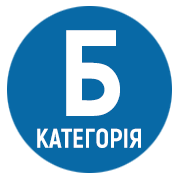THE FIRST EXPERIENCE IN ORGANIZING RUTHENIAN READING SOCIETIES IN HALYCHYNA (1848–1850)
DOI:
https://doi.org/10.33402/up.2020-13-119-136Keywords:
history of Ruthenian reading societies, history of reading in Halychyna, Narodnyi Dim in Lviv, Kolomyia, Ya. HolovatskyiAbstract
Based on the materials of correspondence and memoirs, as well as published sources, the study analyzes the preconditions for the creation and organization of Ruthenian reading rooms in Halychyna, describes the nomenclature of literature that readers received or should have received for common use, their purpose and objectives. It is found out how, where and by whom the first Ruthenian reading rooms in Halychyna were organized in 1848–1850, the problems faced by the first reading rooms, their forms of activity to encourage society to develop. The number of reading rooms operating in Halychyna has been estimated. It is traced that for some time actually operated only the Kolomyia district reading room and a little later the reading room in the Greek-Catholic seminary. Are investigated the reasons for the almost complete failure of the organizers and heads of reading rooms, who failed to ensure their functioning either at all or for a long time. The article reveals the activities of the District Reading Room in Kolomyia and Ruthenian reading rooms in Lviv. The special influence of the Revolution of 1848 on the creation of reading rooms was emphasized, which led to the interest of Halychyna Ruthenians (Ukrainians) in their history. Based on this study, are drawn several conclusions. Firstly, it was found that under the influence of the growth of public and national-cultural activity in 1848–1850, attempts were made to organize the activities of the first Ruthenian reading rooms in Halychyna. This is what prompted the establishment of a district reading room in Kolomyia, two reading rooms in Lviv (in the Narodnyi Dim and the Greek-Catholic Theological Seminary). Secondly, it was found that the first Ruthenian reading rooms in Halychyna were societies of almost exclusively Ruthenian intelligentsia, which did not include peasants and burghers. Thirdly, reading rooms were one of the elements of the separation of Ruthenians from Halychyna Poles in national and cultural life. The lack of local Ruthenian publications, difficulties in delivering the necessary literature from abroad, and the unpreparedness of Halychyna Ruthenians for such a new form of organization of public life, self-education, and leisure as a reading room prevented the first Ruthenian reading rooms from surviving for a long time.
References
93-tie zasidannia Holovnoi Ruskoi Rady 3–15 chervnia 1849 roku. (1849, Cherven 8 (20)). Zoria Halytska, 291 [in Ukrainian].
Didytskyi, B. (Ed.). (1853, July 8 (20)). Promova Vsechesnoho Mykhaila Kuzemskoho, Holovy Viddilu Halytsko-Ruskoi Matytsi, vyholoshena na zasidanni Viddilu 17 (29) chervnia 1853 roku. Zoria Halytska, 216 [in Ukrainian].
Hlystiuk, Y. (2007). Diialnist studentskykh tovarystv Hreko-katolytskoi dukhovnoi seminarii u Lvovi (1849–1914). Lviv: misto – suspilstvo – kultura, 6, 246–294 [in Ukrainian].
Holovatskyi, Y. (1885). Vydavnytstvo «Vinkiv» і «Zustände der Russinen» v 1846 i 1847 r. Literaturnyi zbirnyk Halytsko-ruskoi Matytsi, 1, 38 [in Ukrainian].
Holovatskyi, Y. (Comp.). (1850). Istorychnyi narys zasnuvannia Halytsko-ruskoi Matytsi ta zvit pershoho soboru ruskykh vchenykh ta liubyteliv narodnoi osvity. Literaturnyi zbirnyk Halytsko-ruskoi Matytsi, 58 [in Ukrainian].
Hrushevskyi, M. (Ed.). (1930). Materialy z hromadskoho i literaturnoho zhyttia Ukrainy XIX i pochatkiv XX stolittia (Vol. 5). Kharkiv; Kyiv: Derzhavne vydavnytstvo Ukrainy [in Ukrainian].
Kolosovska, O. (2002) Biblioteka Narodnoho domu: z istorii formuvannia fondiv. Zapysky Lvivskoi naukovoi biblioteky im. V. Stefanyka, 9–10, 114–135 [in Ukrainian].
Lakuš, J. (2008). Reading Societies and their Social Exclusivity: Dalmatia in the First Half of the 19th century. Libellarium, 1 (1), 52–53 [in English].
Neubauer, J. (2007). General Introduction. In M. Cornis-Pope, J. Neubauer (Eds.), History of the literary cultures of East-Central Europe: junctures and disjunctures in the 19th and 20th centuries (Vol. 3, p. 16). Amsterdam; Philadelphia [in English].
Pavetskyi, A. (Ed.). (1850, Liutyi 25 (Berezen 9)). Zoria Halytska, 117 [in Ukrainian].
Pavetskyi, A. (Ed.). (1850, Traven 31 (Cherven 12)). Zoria Halytska, 279 [in Ukrainian].
Pavlyk, M. (1887). Pro rusko-ukraiinski narodni chytalni. Lviv: Tovarystvo imeni Shevchenka [in Ukrainian].
Peremyshl 16-ho maia. (1850, Traven 17 (29)). Zoria Halytska, 258 [in Ukrainian].
Shartie, R. (2003). Knigi, chitateli, chtenie. In V. Ferrone, D. Rosh (Eds.), Mir Prosvescheniya. Istoricheskiy slovar (pp. 295-303). Moscow: pamiatniki istoricheskoi mysli [in Russian].
Shekhovych, S. (1851, Cherven 25 (Lypen 5)). Vechornytsi narodni. Zoria Halytska, 427 [in Ukrainian].
Shekhovych, S. (1851, Liutyi 28 (Berezen 12)). Dumka do «Hadky pro rusku movu». Zoria Halytska, 162 [in Ukrainian].
Studynskyi, K. (Comp.). (1909). Korespondentsiia Yakova Holovatskoho v litakh 1835–49. Lviv: NTSH [in Ukrainian].
Synevodskyi, N. (1850, Cherven 14 (26)). Chutky z Kolomyiskoho pro chytalniu. Zoria Halytska, 302-303 [in Ukrainian].
Ustrii okruzhnoi slovianskoi chytalni z pohliadu zibrannia, kupuvannia, chytannia ta uzhytku knyh. (1849, Veresen 14 (26)). Zoria Halytska, 459-461 [in Ukrainian].
Vnesennia Sviashchennyka N. Synovodskoho do Kolomyiskoi okruzhnoi Rady, pryiniate ukhvaloiu tsiloho zibrannia. (1849, Veresen 14 (26)). Zoria Halytska, 458–459 [in Ukrainian].
Za Chortkivskoho. (1849, Hruden 13 (25)). Halytsko-ruskyi visnyk, 666 [in Ukrainian].
Zastyrets, Y. (1934). Z mynuloho chytalni bohosloviv (iak povstala persha chytal- nia). In O. Buts (Comp.), Almanakh ukrainskykh bohosloviv vydanyi z nahody 150-littia hreko-katolytskoi dukhovnoi semynarii u Lvovi i 85-littia isnuvannia chytalni bohosloviv 1783–1849–1933 (pp. 83–85). Lviv [in Ukrainian].
Zhaha chytannia Rusyniv. (1849, Lypen 26 (Serpen 7)). Halytsko-ruskyi visnyk, 41 [in Ukrainian].






